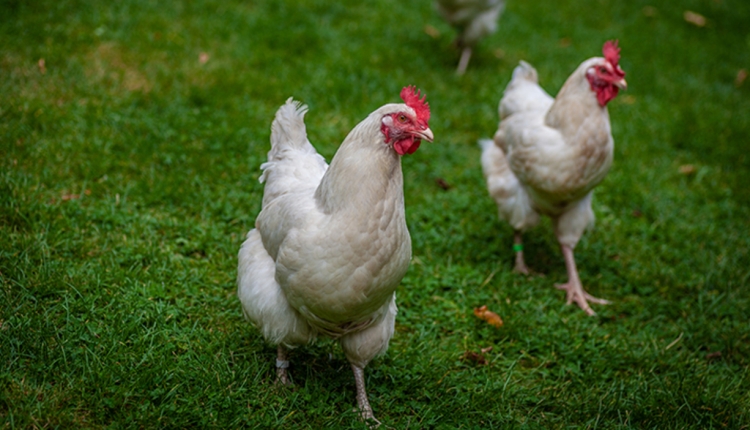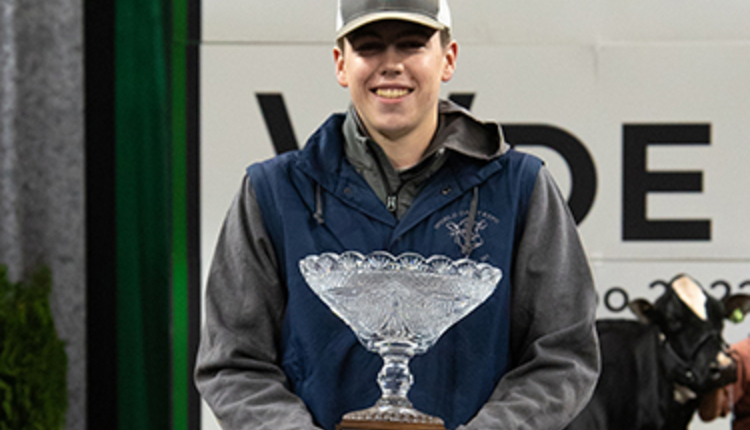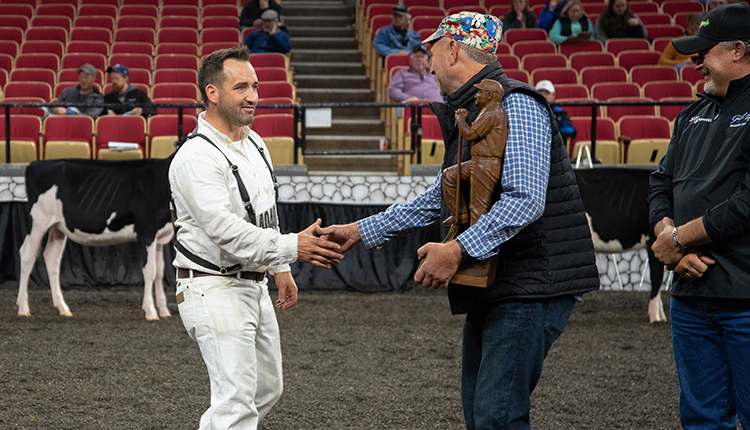Carefully following protocols; keen heat detection; comfortable and well-fed cows; and teamwork are just some of the attributes that helped these five dairies sort to the top of judges' ballots in this year's Dairy Cattle Reproduction Council's (DCRC) Reproduction Awards program. In a very competitive fourth year, the program received 53 nominations from dairies across 17 states, Canada and Mexico. In our November issue, you will find a three-page Round Table detailing how these special herds approach reproduction. In this blog, we will discuss their approach to nutrition which was not included in the Round Table. To download the Round Table, click here.
Collins Dairy: We work very closely with our nutritionist and feel much of our reproduction success is due to the fact we are able to provide enough energy to our high-producing cows. This allows them to cycle before we want to breed them. It is our understanding that timed A.I. protocols are much more effective on animals that are cycling. That is our basic goal. Personally, we have seen better reproductive performance when cottonseed is in our diet, and we are told that is due to the type of fats it provides the cows.
Dutchland Dairy: We work with our nutritionist George Sonic to make sure our rations are balanced. One of the best changes was when we switched to a low-energy, close-up diet. This diet helped transition the cows better.
Kloppe Dairy: We work with MFA Farmers Cooperative Association to balance our ration, as we mainly feed crops that we harvest on our farm. We do not use feed additives to supplement nutrition because we find that the correct ration will provide everything the animal needs to give consistent, daily milk production.
Schilling Farms: We feel our nutrition program is a key factor in our reproductive program. We work with Spensley Feeds and our nutritionists John Wienkes and Mike VanSchyndle. We have focused our energies on making higher-quality feed, leading to a more highly digestible fiber. This has allowed us to get more energy out of our homegrown feeds. We continue to maintain a consistent diet, year in and year out, to keep the cows on an even path with minimal body condition loss. We have very few cows that are not cycling by 70 DIM.
SunBurst Dairy: We worked with James Bailey, from Bailey Consulting, on cow diets with a focus on pre/postfresh groups. Good diets, plus cow comfort, equals better cow health and more pregnancies. We strive to feed our cows with high-quality forages, commodities and minerals. The consistencies and quality of all these products are important to the cow in how well she performs in production and reproduction. This involves implementing changes to the ration on an ongoing basis as our forages change.

A ramped-up reproduction program helped Collins Dairy eliminate natural service bulls two years ago. As co-owner Lisa Collins points out, "A bored bull is an angry bull. There is no place for that on our farm." This team represents just one of the five winners. To see all photos, download the November Round Table by clicking here.
What role has nutrition played in a sound reproduction program?
Collins Dairy: We work very closely with our nutritionist and feel much of our reproduction success is due to the fact we are able to provide enough energy to our high-producing cows. This allows them to cycle before we want to breed them. It is our understanding that timed A.I. protocols are much more effective on animals that are cycling. That is our basic goal. Personally, we have seen better reproductive performance when cottonseed is in our diet, and we are told that is due to the type of fats it provides the cows.
Nutrition starts with seed selection, inputs, harvesting and storage. Timely planting, weed control, and harvesting and packing of the bunker are vital in cow health and performance. Our son-in-law handles all our field operations.
Dutchland Dairy: We work with our nutritionist George Sonic to make sure our rations are balanced. One of the best changes was when we switched to a low-energy, close-up diet. This diet helped transition the cows better.
Kloppe Dairy: We work with MFA Farmers Cooperative Association to balance our ration, as we mainly feed crops that we harvest on our farm. We do not use feed additives to supplement nutrition because we find that the correct ration will provide everything the animal needs to give consistent, daily milk production.
Schilling Farms: We feel our nutrition program is a key factor in our reproductive program. We work with Spensley Feeds and our nutritionists John Wienkes and Mike VanSchyndle. We have focused our energies on making higher-quality feed, leading to a more highly digestible fiber. This has allowed us to get more energy out of our homegrown feeds. We continue to maintain a consistent diet, year in and year out, to keep the cows on an even path with minimal body condition loss. We have very few cows that are not cycling by 70 DIM.
We also feel that the Vita Plus Quick Start Pellet and ReaShure choline has helped minimize transition cow issues to help keep cows in a positive energy balance.
SunBurst Dairy: We worked with James Bailey, from Bailey Consulting, on cow diets with a focus on pre/postfresh groups. Good diets, plus cow comfort, equals better cow health and more pregnancies. We strive to feed our cows with high-quality forages, commodities and minerals. The consistencies and quality of all these products are important to the cow in how well she performs in production and reproduction. This involves implementing changes to the ration on an ongoing basis as our forages change.
Another positive feeding change included developing feeding SOPs last year. This caused feed rations to become more consistent. In addition, utilizing more liquid feed holds mix consistency and results in less feed separation and sorting by cows.

A ramped-up reproduction program helped Collins Dairy eliminate natural service bulls two years ago. As co-owner Lisa Collins points out, "A bored bull is an angry bull. There is no place for that on our farm." This team represents just one of the five winners. To see all photos, download the November Round Table by clicking here.









